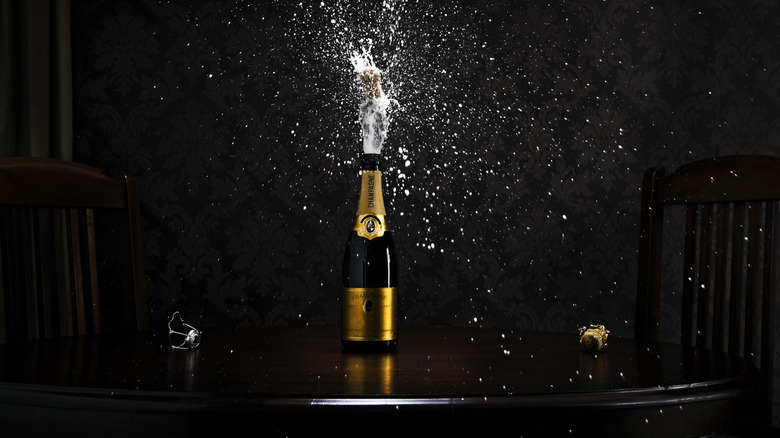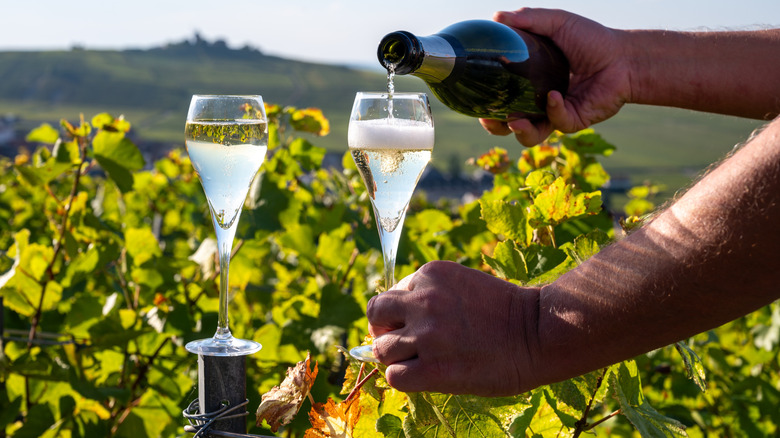What Does Extra Dry Champagne Actually Mean?
Champagne is vibrant and effervescent, and the simple mention of its name or the sound of its popping cork elicits joy. The famed wine comes from Champagne, France, a hilly area with a cooler climate that creates more fruit acidity, a necessary attribute for sparkling wine production. Champagne is traditionally made with pinot noir, chardonnay, and pinot meunier grapes using the traditional method, a complicated process known as méthode champenoise.
But there are many types of Champagne, each featuring descriptors like Brut, Doux, Extra Dry, etc. What do these words mean, and what do they tell us about the Champagne? Specifically, Champagne descriptors like Doux, Extra Dry, and Brut Nature all refer to the sugar levels in the wine, ranging from Brut Nature (zero dosage and very low sugar) to Doux, the sweetest.
Champagne begins with still wine and then moves into a second fermentation inside individual, sealed bottles, with a dose of yeast and sugar added (dosage) to aid the fermentation and carbonation process. It undergoes another step called disgorgement, when particles created by yeast and sugar that settle in the bottle's neck are disgorged, and the bottle is sealed again. Champagne's wine is fermented under higher pressure and then aged, resulting in finer bubbles. It often shows complex, creamy flavors of brioche and almond and fruity flavors like apricot, apple, and lemon. The amount of sugar added to the dosage will help determine whether it lands on the Brut Nature (not sweet) or Doux (very sweet) spectrum.
Extra Brut Champagne is a drier version of bubbly
Breaking down the sugar levels further, Doux has more than 50 grams per liter (g/L) of sugar, followed by Demi-sec at 32-50 g/L, then Sec at 17-32 g/L. On the drier side of the spectrum, Extra Dry has 12-17 g/L of sugar, Brut has less than 12 g/L, and Extra Brut has 0-6 g/L. The driest Champagne is Brut Nature, with zero dosage and less than 3 g/L of sugar. If you notice, that shows that Extra Dry Champagne lands right in the middle of the spectrum, as a sparkling wine with a touch of sugar without being exactly sweet.
It still might be too sweet for drinkers who like their Champagne to have at least a Brut-level dryness. Remember that even if no extra sugar is added during production, all wine has sugar due to the fruit content. However, Extra Brut and Brut Nature are excellent options if you're looking for a particularly dry Champagne to sip.

